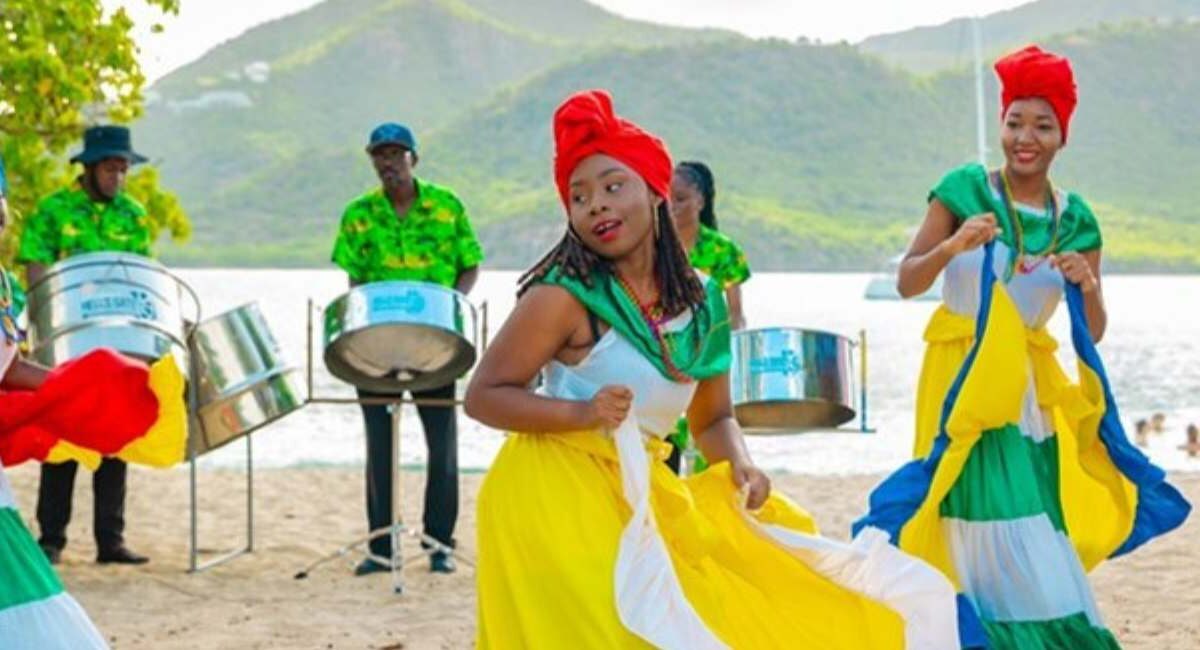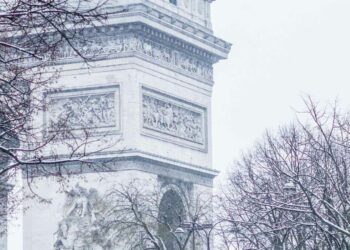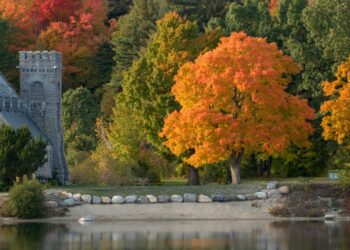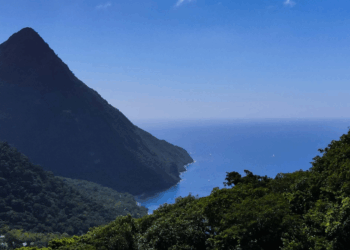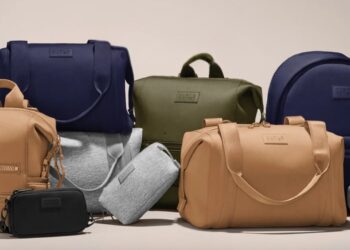For those in the know, there’s no better time to experience Antigua and Barbuda than late July, when the twin-island nation bursts to life with its most spirited, local celebration of the year. Antigua Carnival transforms the islands into a 10-day kaleidoscope of music, masquerade, and dancing in the streets — a joyful, rum-soaked spectacle long cherished by locals and savvy travelers alike. This year’s theme, Itz A Vibe, says it all. It’s one of the Caribbean’s most iconic celebrations, and yes, it’s as wild, joyful, and unforgettable as it sounds.
Locals call participating in the high point of the festivities (the last two days) “playing Mas.” Short for masquerade, Mas likely refers to the whimsical costumes which first drew me to Antigua Carnival a few years ago. Though I enjoy every moment of the 10-day fête, I’d return to Antigua Carnival for the costumes alone. Crafted by skilled designers and avid volunteers at Mas camps located mainly in the St. John’s capital, they are colorful masterpieces of feathers, glitter, sequins, sparkly gems, silk, lace, chiffon, and satin. True Antiguan couture, each handmade outfit is a triumph of artistry, some with bustiers, others capped by soaring headgear, or edged by flapping wings. Elaborate and made to show plenty of skin, the costumes exude the ultimate in festive jubilation as paraders jive, sway, and twirl through the streets. The costumes also symbolize each Carnival troupe’s unique theme — often drawn from a cultural story. These groups of performers, the heartbeat of the event, spend months planning for their parade theme and designing their Carnival costumes at Mas camps. For travelers with artsy interests, a visit to a Mas camp in advance of Antigua Carnival promises fascinating insight into local culture as well as the possibility to gain inspiration and design skills, like the art of wire-bending where the elaborate back-pieces are bent into the desired shape.

The History
Before the feathers and the soca, there was resistance, ritual, and a history worth dancing for. If you’ve been and played “Mas” in Antigua, you’ve felt the palpable elation when you danced with locals to the seductive beat of the iron and steel bands. You’ve seen the rapture on the faces of the participants and been drawn in by their shouts of delight. No doubt you’ve wanted, as I have, to don a feathery costume. Truly, Antigua Carnival’s pure happiness is contagious and electrifying. As it turns out, it’s always been that way.
According to legend, when the enslaved population heard the news that emancipation had come to the British Caribbean on August 1, 1834, they rushed from their homes, en masse, into the streets for an impromptu community celebration. For more than a century, Antiguans continued to honor the day with a popular but informal Carnival that reflected the euphoria of the day when they were freed from bondage. At last, on August 1, 1957, the party known as Carnival became official. Though it has evolved over the years, the first official Antigua Carnival launched some of the event’s most sought after traditions – such as the Carnival Queen show. Rooted in tradition, the pageant is one of the season’s most anticipated events — a dazzling competition where young women from across the islands don elaborate costumes, showcase talent, and vie not just for a crown, but for the honor of becoming cultural ambassadors for the year ahead. Bigger and better than ever, the festival continues as a multi-day party that is inspired by parades, colorful with costumes and vivacious with cheer.
What It’s Like
Expect parades to include a T-shirt Mas, the traditional J’ouvert whichmarks the start of Carnival, and two days of Mas in the streets with the last day culminating in what is called a ‘Last Lap’ that goes well into the night, bringing an exciting climax to the 10-day celebrations. Costume-clad troupes move in spirited choreography through the streets, deftly evoking their troupe’s motif through dance, dress, chanting, and song. Of course, there’s plenty of intuitive action as well, including playful diversions, laughing, and screams of delight. Nobody on the sidelines can resist being enveloped by the crowds, and locals invite spectators to join in the reverie. Shimmy to the beat of accompanying jam bands, which mostly play soca music, the music of the Caribbean, but the Antiguan sound carrying its own special sound and brand. Don’t feel the need to squeeze into a sexy Mas costume just to join in the happy antics; a sundress will do just fine. Offering the Caribbean’s warmest welcome at Carnival, Antiguans invite everyone to partake in their joy.
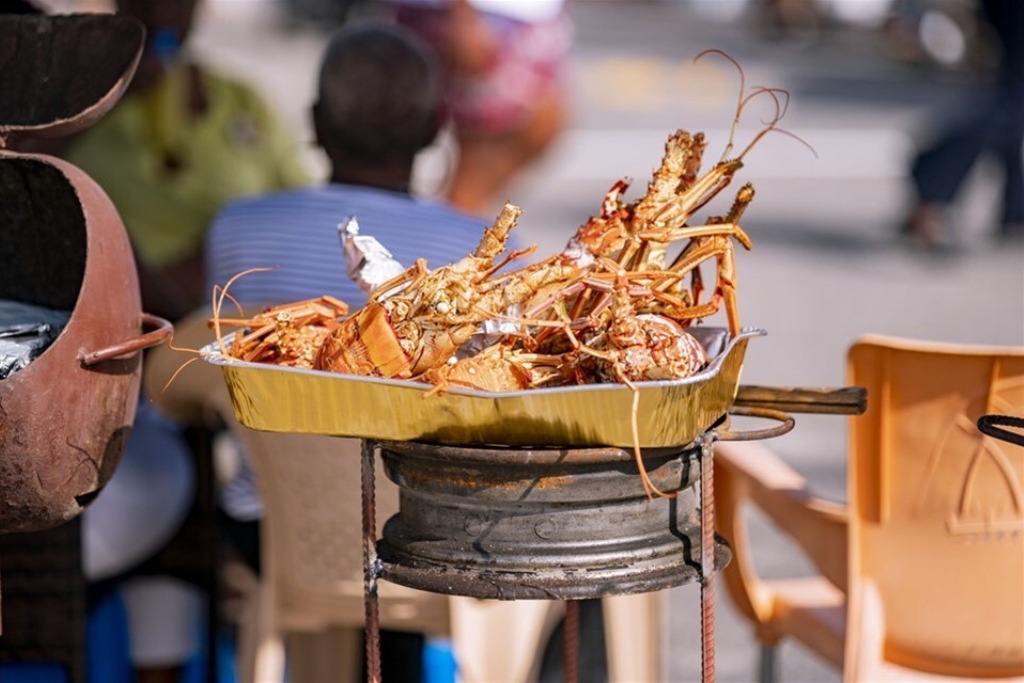
You’ll find Antigua Carnival not only in the streets of St. John’s, but at Carnival City, the Antigua Recreation Ground, which once served as the home of international cricket in Antigua. Expect throngs, especially at the popular evening shows, which require tickets to attend. Food vendors abound around Carnival City. Try some local specialities at the festival village, set beside Carnival City. Freshly caught fish, BBQ, and burgers sizzle on grills, while favorites such as jerk chicken, Caribbean lobster, ducana (sweet dumplings), conch fritters, pepperpot, tamarind balls, and salt fish beg to be sampled. Sip some Antiguan rum and the local beer, Long Bay, but don’t forget to carry water — the festive days and nights are hot and long.
Antigua Carnival is always held the last week of July to early August (2026 dates are July 29 to August 4, so plan ahead). Highlights include the Soca Monarch, a competition between soca artists in a high-energy music fest and competition, and of course, Last Lap — a wildly dynamic grand finale street party in St. John’s City.

More Art and Fashion Not to Miss
While Carnival delivers the rhythm and revelry, Antigua’s Art Week is where the islands quietly shine — a vibrant, late-November celebration of creativity that’s equal parts culture, color, and community. Delve into the islands’ inspiring Art Week which occurs each year in late November. In 2025, the week-long festival runs from November 26 to December 2, and will showcase fashion, the visual arts, music, and more. Expect an array of workshops, lectures, contests, atelier tours, lessons, performances, and loads of Antiguan cheer.
Consider a shopping spree at Kenai Swimwear, where sculpting swim suits provide an understated alternative to the Antigua Carnival’s flamboyant costumes. Antigua-based and designed, Kenai creates elegant silhouettes – perfect for post-Carnival repose. They’re ideal for Antigua’s other side: sunsets at five-star hotels, pool lounge chairs with a good book, and riveting conversations at the beach bar with locals and visitors alike.
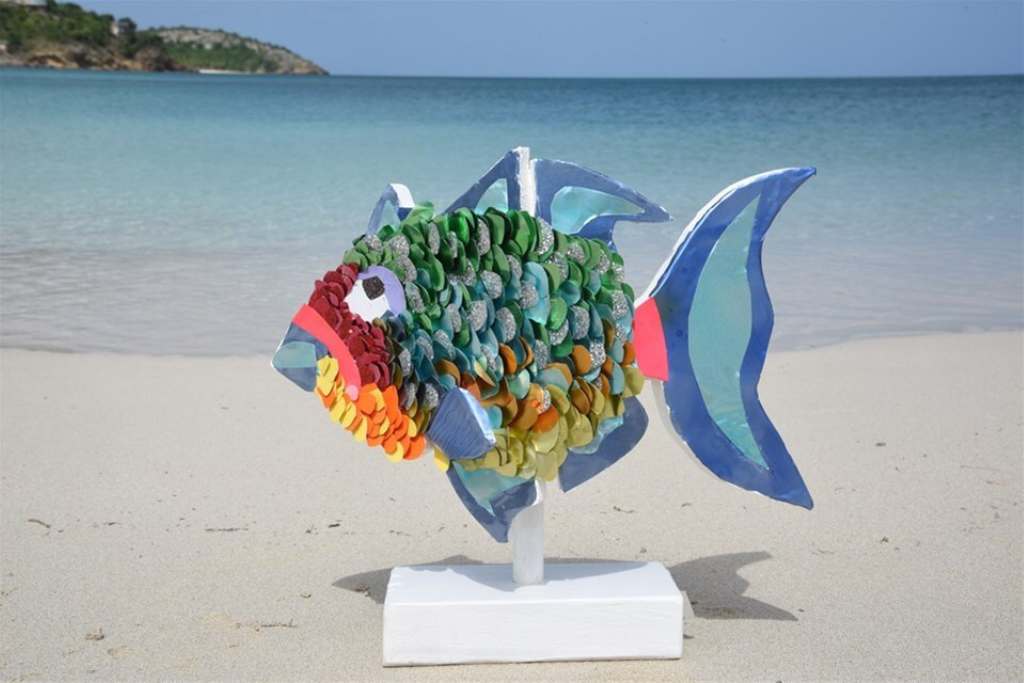
Browse the curated treasures at Fig Tree Studio Art Gallery, a contemporary art space championing emerging Antiguan and Caribbean artists. From bold mixed-media works to island-inspired sculpture, it’s a must visit for collectors, creatives, and anyone seeking a deeper connection to the region’s artistic heartbeat.
Whether or not you yield to the temptation to dance around the island during Antigua Carnival in a bright costume or peruse the pop-ups during more tranquil Art Week, you’ll want to enjoy the island’s watery bounty with equal flair.
Featured image by Watkins Multimedia. In partnership with the Antigua & Barbuda Tourism Authority.

